
Transport and accumulation of toxic mineral elements
Transporters of As and Cd in rice
Arsenic (As) and cadmium (Cd) are highly toxic metal (loid) elements for both plants and human beings. Intake of these toxic elements through food chain will cause health problem such as Itai-itai disease. We have identified several transporters involved in the accumulation of As and Cd in rice grain using different approaches. As uptake in rice is mediated by two Si transporters; Lsi1 and Lsi2 in rice. We also have identified three transporters involved in Cd accumulation in rice. OsNramp5 is responsible for Cd uptake in rice, while OsHMA3 is involved in sequestration of Cd into root vacuoles and OsHMA2 mediates translocation of Cd from the roots to the shoots and distribution to the panicles. Among them, over-expression of OsHMA3 resulted in selective reduction of Cd in the grain.
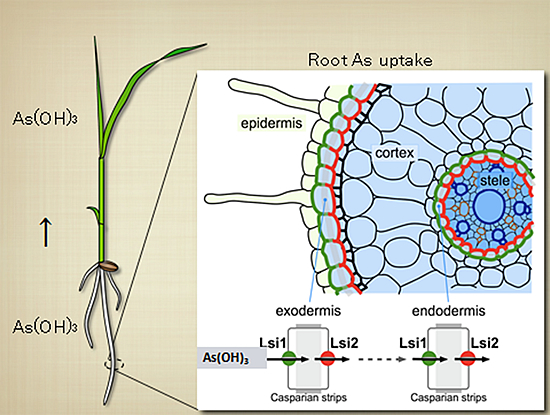
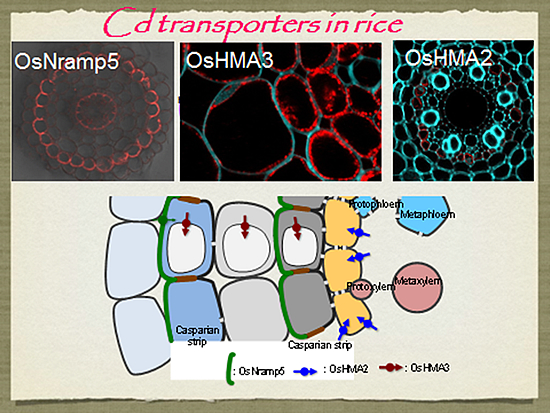
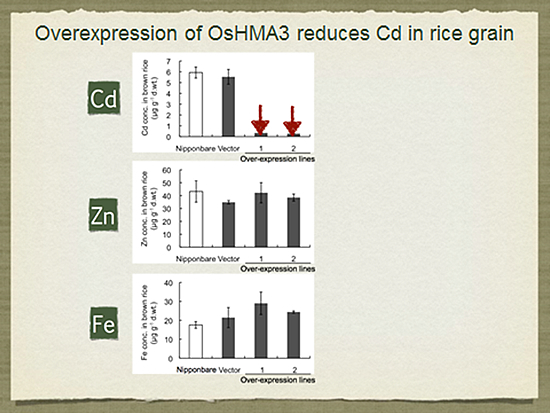
Key publications
- Ma, J. F., Yamaji, N., Mitani, N., Xu, X. Y., Su, Y. H., McGrath, S. and Zhao, F. J. 2008. Transporters of arsenite in rice and their role in arsenic accumulation in rice grain. Proc Natl Acad Sci USA 105: 9931-9935.
- Ueno, D, Yamaji, N., Kono, I., Huang, C. F., Ando, T., Yano, M. and Ma, J. F. (2010) Gene limiting cadmium accumulation in rice. Proc Natl Acad Sci USA 107:16500-16505.
- Sasaki, A., Yamaji, N., Yokosho, K. and Ma, J. F. 2012. Nramp5 is a major transporter responsible for manganese and cadmium uptake in rice. Plant Cell 24: 2155–2167.
- Yamaji, N., Xia, J. X., Mitani-Ueno, N., Yokosho, K. and Ma, J. F. 2013. Preferential delivery of Zn to developing tissues in rice is mediated by a P-type ATPases, OsHMA2. Plant Physiol. 162: 927–939.
Mechanisms of hyper-accumulation of heavy metals
We are working on hyperaccumulator of heavy metals; Arabidopsis halleri and Thlaspi (Noccaea) caerulescens. Physiological analysis with Ganges (an accession of Cd hyperaccumulator) showed that Cd is sequestered into vacuoles of leaf cells. Furthermore, we found that a tonoplst-localized transporter TcHMA3 is responsible for this sequestration. The expression of TcHMA3 is higher in the hyper-accumulator than in the non-hyperaccumulator. This high expression is attributed to more copy number of this gene in the genome. On the other hand, NcNramp1 localized at the root endodermis is responsible for high translocation of Cd from the roots to the shoots in Ganges.
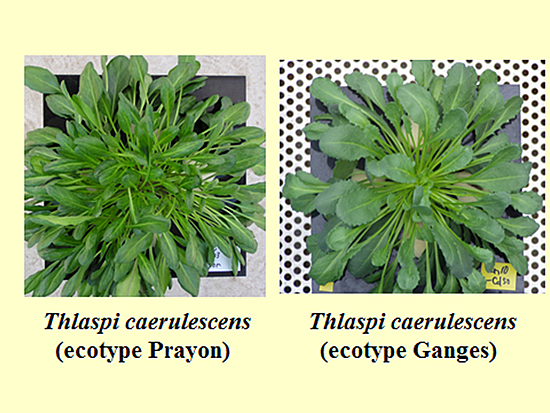
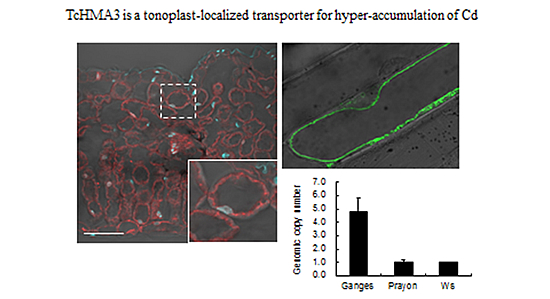
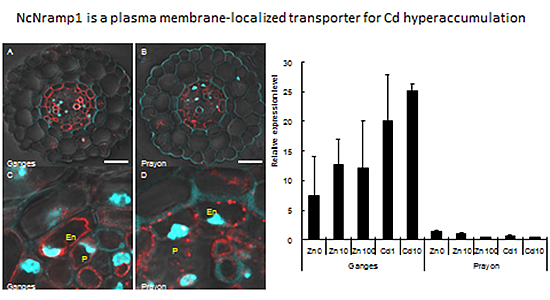
Key publications
- Ueno, D., Ma, J. F., Iwashita, T., Zhao, F. J. and McGrath, S. P. 2005. Identification of the form of Cd in the leaves of a superior Cd-accumulating ecotype of Thlaspi caerulescens using 113Cd-NMR. Planta 221: 928-936.
- Ma, J. F., Ueno, D., Zhao, F. J. and McGrath, S. P. 2005. Subcellular localisation of Cd and Zn in the leaves of a Cd-hyperaccumulating ecotype of Thlaspi caerulescens. Planta 220:731-736.
- Ueno, D., Milner, M., Yamaji, N., Yokosho, K., Koyama, E., Zambrano, C., Kaskie, M., Ebbs, S., Kochian, L., Ma, J. F. 2011. Elevated expression of TcHMA3 plays a key role in the extreme Cd tolerance in a Cd-hyperaccumulating ecotype of Thlaspi caerulescens. Plant J., 66: 852-862
- Milner, M., Mitani-Ueno, N., Yamaji, N., Yokosho, K., Craft, E., Fei, Z., Ebbs, S., Zambrano, M., Ma, J. F*. Kochian, L*. 2014. Root and shoot transcriptome analysis of two ecotypes of Noccaea caerulescens uncovers the role of NcNramp1 in Cd hyperaccumulation. Plant J. 78: 398–410 (*co-corresponding author).







